As pet care ambassadors, it’s our job to keep things looking professional. In my opinion, there are plenty of salons and pet businesses that fall far below the realm of professionalism. I know the saying can be cheesy – but seriously – dress for success. Would you want to get have your personal pet groomed by someone who doesn’t take pride in his or her own personal presentation? Would you feel confident that his grooming shop was clean, sanitary, and safe?
 I know it can get tiring to dress up a little every day. However, our clients are entrusting us with the care of their pets. Like it or hate it, you can easily influence their trust factor simply by the way you look when you greet your clients. Think of yourself as your own brand. Don’t you want your product to be consistent and look great? Of course! And your clients are looking for that, too.
I know it can get tiring to dress up a little every day. However, our clients are entrusting us with the care of their pets. Like it or hate it, you can easily influence their trust factor simply by the way you look when you greet your clients. Think of yourself as your own brand. Don’t you want your product to be consistent and look great? Of course! And your clients are looking for that, too.
A fashionable, well-groomed appearance is essential when it comes to professionalism in this industry. When you are in a salon, kennel, pet resort, veterinarian clinic, or mobile grooming unit, you have to look the part. Come to work each day looking crisp, clean, and pulled together. Blue jeans, sweat pants, and athletic shorts ARE NOT professional attire! Black, white, or khaki slacks work well. Longer skirts are great for women and so are skorts in warmer climates. Conservative shorts or Capri’s may work for your environment, as well. I’ve even seen leggings work when paired with an over-sized, long top or smock. Look for clothing that is not prone to wrinkling or be prepared to learn how to iron!
Today, there are many options for hair-repelling garments. There are all types of tops and bottoms in a wide variety of styles. If you work in a salon with a dress code, this may be easier. If not, have some fun with the pet styling fashions that are available. It may even be a good idea to keep an extra outfit or smock around the shop as a back-up. If you get drenched or messy, a quick change will instantly boost your comfort level and mood.
Remember, low-cut tops and short-shorts are never professional! If you have shorts that are too short or a top that is too revealing (especially when you are squatting down to pick up a dog), then you’re not displaying professionalism. Muscle shirts and shirts with the sleeves cut off don’t make the grade, either.
Don’t forget your footwear. Most pet groomers are on their feet for hours. You are standing, lifting, bending, squatting, and twisting – all day long. Although clients may not be looking at your feet, having solid, supportive footwear will promote comfort for to you. Being comfortable makes it easy for you to be warm and friendly to all your clients. Supportive footwear will also enhance the longevity of your career. Over the long haul, your feet will take a beating. Don’t skimp on your footwear. Invest in the best.
Scent is a very powerful sense. When it comes to your perfume, cologne, or fragrance you put on pets, be light-handed with the spray. Many people have allergies and are sensitive to fragrance. Plus, if you have multiple staff members wearing all different scents, it can be unpleasant for all. The same can be said for your makeup and hair color. You want to appeal to a wide range of clients, so conservative is best in most cases. When in doubt, be a minimalist. Remember, you can always “be yourself” once you leave the shop.
While we are on scent – what about your breath? If you are communicating to others – clients or coworkers – bad breath is down-right offensive. Brush, floss, and use a mouthwash regularly. Not only will it save your teeth, your clients won’t be offended as you discuss what trim will work best on Fluffy today. Breath mints and gum can be helpful between brushings. Lose the gum quickly once it has done its job. Chewing gum in front of clients is distracting and it is unprofessional in front of clients. It’s no fun to listen to someone chomping away while on the phone, either. The same can be said for eating and drinking on the floor. Keep snack and coffee breaks limited to behind closed doors.
Proper hygiene is crucial. It should go unsaid, but being clean and odor-free is a must. There is nothing more offensive – and embarrassing – than personal body odor. The famous motivational speaker Zig Ziglar, said, “People often say that motivation doesn’t last. Well, neither does bathing – that’s why we recommend it daily.” Nothing could be more true!
Your own hair needs to be clean and simply styled. If your hair is long, get it tied back and away from your face. As your work with clippers or shears, you don’t want to be trimming a lock of your own hair as you scissor that leg. I hate to think of how many people with long hair have caught their tresses in the spinning grinder as they worked. Ouch! Or worse yet, drag it through anal gland expressions, defecation, or urine.
 Having a touch of jewelry is a nice finishing touch. Done well, it always reflects positively. However, just like with fragrance – go light. A few simple rings. A durable watch (and you always need to know the time!!). If your ears are pierced – stick with super simple earrings – something a dog can’t accidentally catch in a paw, ripping your ear lobe. If you opt for a necklace, keep it tasteful. Don’t be in love with it. Dogs will catch it in their paws and break it, eventually. The same thing with is true with bracelets.
Having a touch of jewelry is a nice finishing touch. Done well, it always reflects positively. However, just like with fragrance – go light. A few simple rings. A durable watch (and you always need to know the time!!). If your ears are pierced – stick with super simple earrings – something a dog can’t accidentally catch in a paw, ripping your ear lobe. If you opt for a necklace, keep it tasteful. Don’t be in love with it. Dogs will catch it in their paws and break it, eventually. The same thing with is true with bracelets.
Having well-groomed fingernails is what I consider a bonus. Working with dirty dogs and trimming toenails lends itself to dirty fingernails – even if you do a lot of bathing. Trimming Poodle feet has a tendency chip fingernails. Personally, I liked to keep my nails painted. Painted fingernails will hide all sorts of flaws. Unfortunately, when you do a lot of bathing, standard nail polish has a tendency to peel off quickly – sometimes in as little as one day. My solution was to have my fingernails professionally done every two weeks. Both acrylic and shellac nail applications seem hold up well to the abuse groomers put their hands through. Ragged nails on women and men can be easily tidied up. When you give the pet to the owner, their eyes are naturally drawn to your fingers as you hand over the leash. Wouldn’t filed nails make a great impression? Plus, it gives you a little time to pamper your most valuable asset – YOUR HANDS!
Pay attention to the details. Judy Hudson is one our popular Learn2GroomDogs.com Training Partners. In her video, What I Know For Sure she shares this tip: “It doesn’t cost a lot to be clean. It doesn’t cost a lot of money to be neat and tidy. All it takes is a little elbow grease.”
When we become frustrated that no one seems to take us seriously, we need to look objectively at ourselves to see if we are projecting professionalism. If you have clients who…
- fail to show up for scheduled appointments,
- don’t bother to call when they have to cancel an appointment, or
- constantly haggle with you over grooming prices,
…it’s a sign of a lack of respect for you and your profession. It may be time to be honest about your personal presentation. Your appearance should convey the message, “I’m a professional and I deserve respect.” When you respect yourself, others will, too.
As pet care ambassadors, not only is it our job to groom pets – but it’s also our job to present a professional image for our industry. Can you afford to look like you just rolled out of bed and ran into work? What about trade shows? How does it look when you accept your award at a grooming competition when the pet looks better than you do? How can you command respect from your peers and clients when you don’t look the part? I don’t know any successful person who doesn’t sweat the details. Being impeccable, both personally and in your workspace, shows the client that you care about yourself. The message you are sending out is that you are confident with your skills. You are successful. You respect yourself enough to do the same for them – and for their pet.
What do you think? Do you feel like a professional? Jump over to the Learn2GroomDogs Facebook page and tell us about it.
Happy trimming,
~Melissa

 When I first opened
When I first opened  The idea of licensing within the pet grooming industry is not a new one. I still remember the efforts of Gregory Krisp and Kathy Rose 20 years ago. They were backed by the late Sally Liddick and Barkleigh Productions. They formed the Groomer Licensing Founders Committee in 1996. They were on the forefront of the licensing issue in our industry. Unfortunately, they were way ahead of their time. Their efforts fell upon deaf ears.
The idea of licensing within the pet grooming industry is not a new one. I still remember the efforts of Gregory Krisp and Kathy Rose 20 years ago. They were backed by the late Sally Liddick and Barkleigh Productions. They formed the Groomer Licensing Founders Committee in 1996. They were on the forefront of the licensing issue in our industry. Unfortunately, they were way ahead of their time. Their efforts fell upon deaf ears.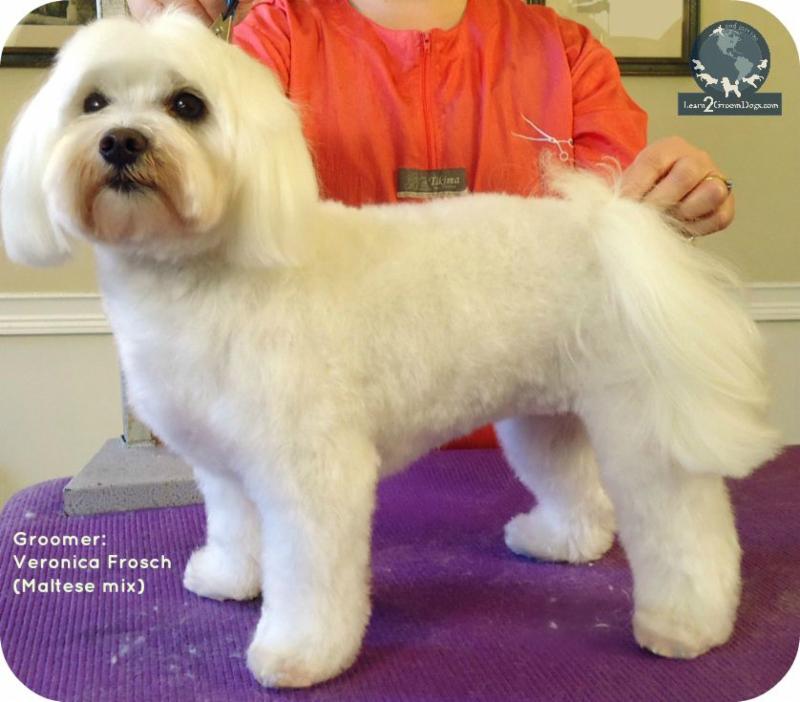 Don’t you love it when an owner walks into a salon and ask for this trim by name? They actually think this is a universal standard trim that all groomers and pet stylists should know how to do. When we start asking them questions, they get all huffy, thinking we don’t know how to do our jobs. Frustrating!! You and I know there isn’t a consistent right way to do a “puppy cut.” There are many – many variations!
Don’t you love it when an owner walks into a salon and ask for this trim by name? They actually think this is a universal standard trim that all groomers and pet stylists should know how to do. When we start asking them questions, they get all huffy, thinking we don’t know how to do our jobs. Frustrating!! You and I know there isn’t a consistent right way to do a “puppy cut.” There are many – many variations!
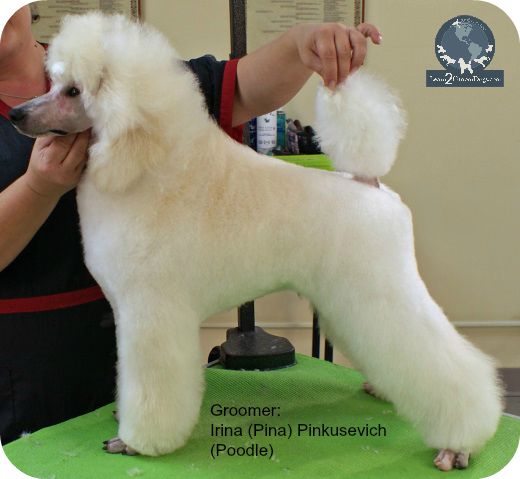 It’s important to keep this in mind, too: one person’s interpretation of a puppy cut might be that of a smooth-coated puppy. Think Boxer, Pug, or Beagle. Another person’s interpretation would be that of a fluffier breed like a Shih Tzu, Bichon, or Poodle. There’s also a big difference between a four-week old puppy and a ten-week old puppy in terms of coat growth.
It’s important to keep this in mind, too: one person’s interpretation of a puppy cut might be that of a smooth-coated puppy. Think Boxer, Pug, or Beagle. Another person’s interpretation would be that of a fluffier breed like a Shih Tzu, Bichon, or Poodle. There’s also a big difference between a four-week old puppy and a ten-week old puppy in terms of coat growth.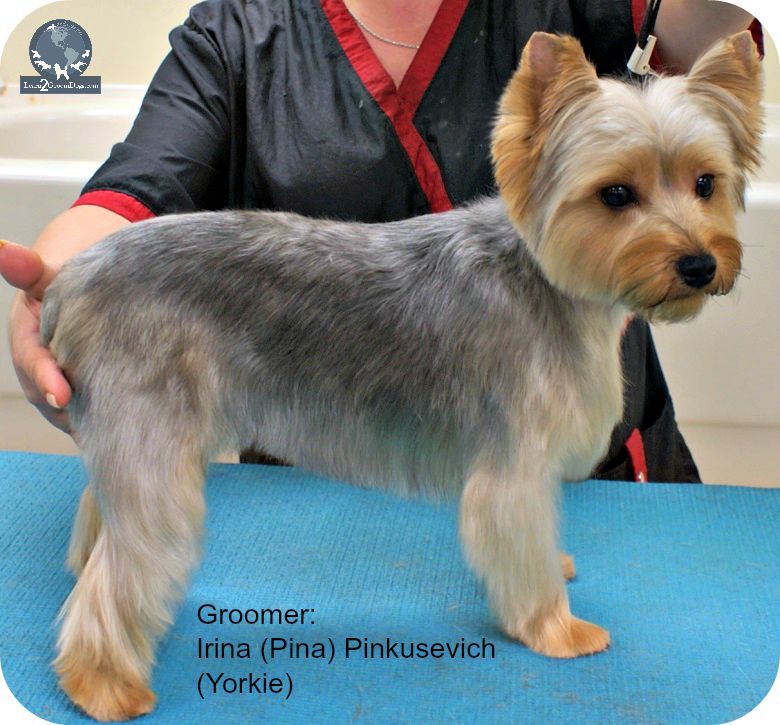 Here is a list of talking points when a new client request a “puppy cut.”
Here is a list of talking points when a new client request a “puppy cut.” Take charge of the conversation and win over your clients by using The Theory of Five!
Take charge of the conversation and win over your clients by using The Theory of Five! Have you seen the new American Kennel Club Complete Dog Book? It’s mammoth! When I grabbed mine, I questioned if I needed a roller cart just to carry it. (Just kidding… but the thought crossed my mind!)
Have you seen the new American Kennel Club Complete Dog Book? It’s mammoth! When I grabbed mine, I questioned if I needed a roller cart just to carry it. (Just kidding… but the thought crossed my mind!) It has been a long time since the last edition. With the AKC approving new breeds at a breakneck pace, it is nice to have an up-to-date (at least for the moment) reference. The AKC Complete Dog Book is the foundation of all great pet groomers and stylists. In comprehensive grooming schools around the country, it is the groundwork for the curriculum. It is at the root of every grooming competition. It is the foundation of every voluntary grooming certification program.
It has been a long time since the last edition. With the AKC approving new breeds at a breakneck pace, it is nice to have an up-to-date (at least for the moment) reference. The AKC Complete Dog Book is the foundation of all great pet groomers and stylists. In comprehensive grooming schools around the country, it is the groundwork for the curriculum. It is at the root of every grooming competition. It is the foundation of every voluntary grooming certification program. A client calls stating they own a breed that you have never groomed before. You’ve seen it at dog shows but have never had an opportunity to groom one. Or maybe you’ve never even heard of or seen the breed before.
A client calls stating they own a breed that you have never groomed before. You’ve seen it at dog shows but have never had an opportunity to groom one. Or maybe you’ve never even heard of or seen the breed before. Your next step is to look up the breed in reference books. If you have an American Kennel Club (AKC) Complete Dog Book (or a similar book from your country), start there. This will give you the official breed standard. Review the breed profile. Read about the history of the dog to gather clues about the dog. After a quick scan, you will have a good idea of the size, temperament, structure, and coat type of this new dog. Most will also have photos that accompany each breed. If you don’t have an official breed standard book handy, you can always look it up online.
Your next step is to look up the breed in reference books. If you have an American Kennel Club (AKC) Complete Dog Book (or a similar book from your country), start there. This will give you the official breed standard. Review the breed profile. Read about the history of the dog to gather clues about the dog. After a quick scan, you will have a good idea of the size, temperament, structure, and coat type of this new dog. Most will also have photos that accompany each breed. If you don’t have an official breed standard book handy, you can always look it up online. A positive attitude helps you deal more easily with daily affairs. It brings brightness into your life, making it easier to avoid worries and negative thinking.When you’re positive, you have a clear, calm mind that is open to possibilities and see opportunities where others see nothing.
A positive attitude helps you deal more easily with daily affairs. It brings brightness into your life, making it easier to avoid worries and negative thinking.When you’re positive, you have a clear, calm mind that is open to possibilities and see opportunities where others see nothing. Wikipedia defines lifelong learning as, “The ongoing, voluntary, and self-motivated pursuit of knowledge for either personal or professional reasons.”
Wikipedia defines lifelong learning as, “The ongoing, voluntary, and self-motivated pursuit of knowledge for either personal or professional reasons.” Successful pet professionals are achievers. You aren’t going to see successful pet grooming teams dragging around the shop. Nope. They are buzzing with activity. They are constantly on task, on schedule, and looking for a way to shave moments off any task without sacrificing quality. Their hands and feet are never still.
Successful pet professionals are achievers. You aren’t going to see successful pet grooming teams dragging around the shop. Nope. They are buzzing with activity. They are constantly on task, on schedule, and looking for a way to shave moments off any task without sacrificing quality. Their hands and feet are never still. Curiosity might have killed the cat, but a new study by psychologists suggests that curiosity is very good for people. If you want a rewarding career – be curious.
Curiosity might have killed the cat, but a new study by psychologists suggests that curiosity is very good for people. If you want a rewarding career – be curious. Being persistent after it seems like everything has failed is one of the hardest things to do. You just want to give up. Give up on the dog. Give up on a technique. Give up on yourself.
Being persistent after it seems like everything has failed is one of the hardest things to do. You just want to give up. Give up on the dog. Give up on a technique. Give up on yourself. If you want to be successful at your job and move up, you need to be passionate about your work. You need to be motivated and driven to be the best you can be. Passionate people love their work.
If you want to be successful at your job and move up, you need to be passionate about your work. You need to be motivated and driven to be the best you can be. Passionate people love their work. Passion is an emotion that comes from within you. It’s your enthusiasm. Your motivation. Your drive.
Passion is an emotion that comes from within you. It’s your enthusiasm. Your motivation. Your drive. Think about how the medical profession is organized… when you need a routine annual medical exam, do you book an appointment with a Podiatrist? No. You’d get an appointment at your regular clinic, where they deal primarily with routine and preventive health care. Depending on your condition, you might get an appointment with a nurse practitioner who is qualified to treat a certain spectrum of illnesses. For situations requiring more formal training and experience, you’d see your family doctor. If a health disorder required attention from an expert in a particular field of study, you would seek the help of a specialist.
Think about how the medical profession is organized… when you need a routine annual medical exam, do you book an appointment with a Podiatrist? No. You’d get an appointment at your regular clinic, where they deal primarily with routine and preventive health care. Depending on your condition, you might get an appointment with a nurse practitioner who is qualified to treat a certain spectrum of illnesses. For situations requiring more formal training and experience, you’d see your family doctor. If a health disorder required attention from an expert in a particular field of study, you would seek the help of a specialist. efficiently with clippers. Groomers are comfortable with a variety of clippers and blade choices. They can handle a wide range of coat types on both bath and brush style pets as well as simple, low maintenance haircuts. They have basic knowledge of how to work with scissors and blenders, getting adequate results for non-discriminating clients.
efficiently with clippers. Groomers are comfortable with a variety of clippers and blade choices. They can handle a wide range of coat types on both bath and brush style pets as well as simple, low maintenance haircuts. They have basic knowledge of how to work with scissors and blenders, getting adequate results for non-discriminating clients.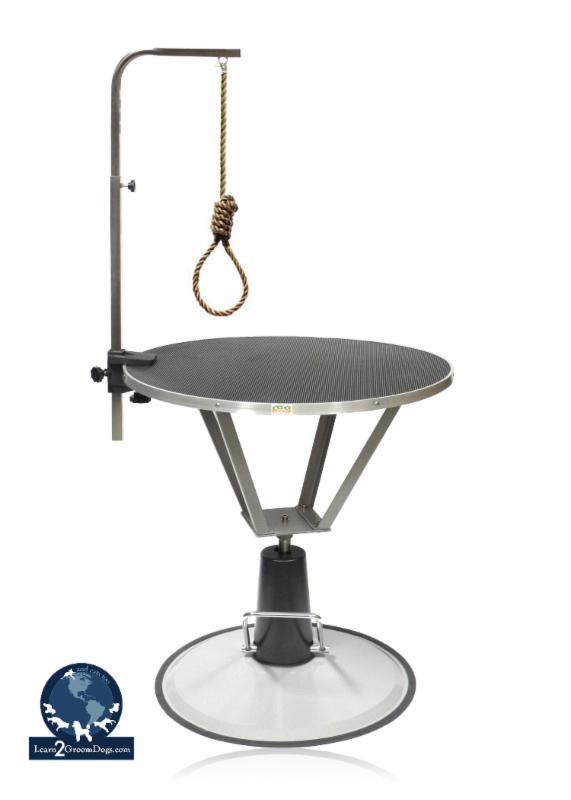 Every industry has its own set of technical terms. Those of us behind the grooming table are familiar with them, but have you stopped to think how our terminology sounds to customers? The words we use can paint a very negative picture to the client. Of course, we never intend it that way – we’re just using words and phrases that groomers have used for years.
Every industry has its own set of technical terms. Those of us behind the grooming table are familiar with them, but have you stopped to think how our terminology sounds to customers? The words we use can paint a very negative picture to the client. Of course, we never intend it that way – we’re just using words and phrases that groomers have used for years.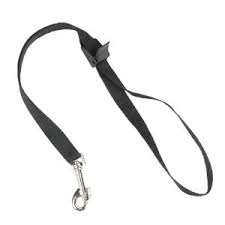 Although this is a major safety item used in most salons, the term I hear routinely to describe this piece of equipment is the word, “noose.” Every time I hear it, the hackles on the back of MY neck stand up.
Although this is a major safety item used in most salons, the term I hear routinely to describe this piece of equipment is the word, “noose.” Every time I hear it, the hackles on the back of MY neck stand up. Think about how your terms can negatively affect your clients. Most of the time, we are so busy just trying to stay ahead of the grooming game, we never stop to think how we sound to the client. We may love our four-footed customers, but it’s our two-legged clients we really need to win over – gaining their trust – and their business.
Think about how your terms can negatively affect your clients. Most of the time, we are so busy just trying to stay ahead of the grooming game, we never stop to think how we sound to the client. We may love our four-footed customers, but it’s our two-legged clients we really need to win over – gaining their trust – and their business.








